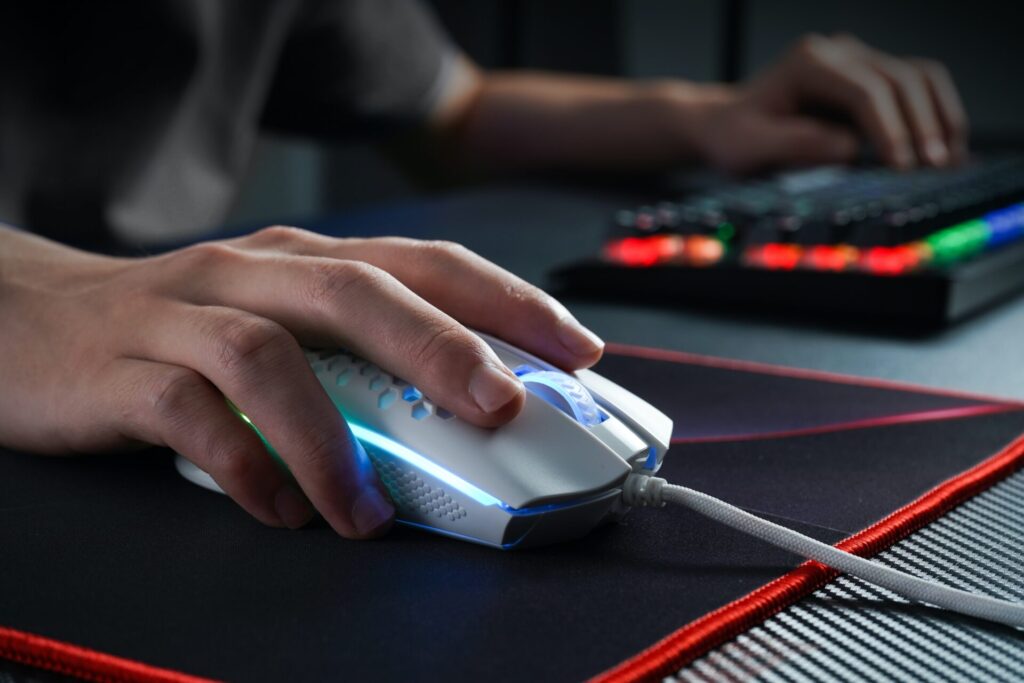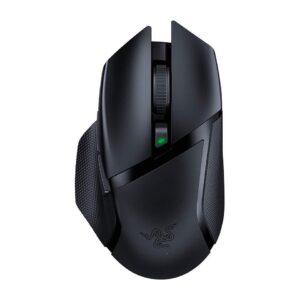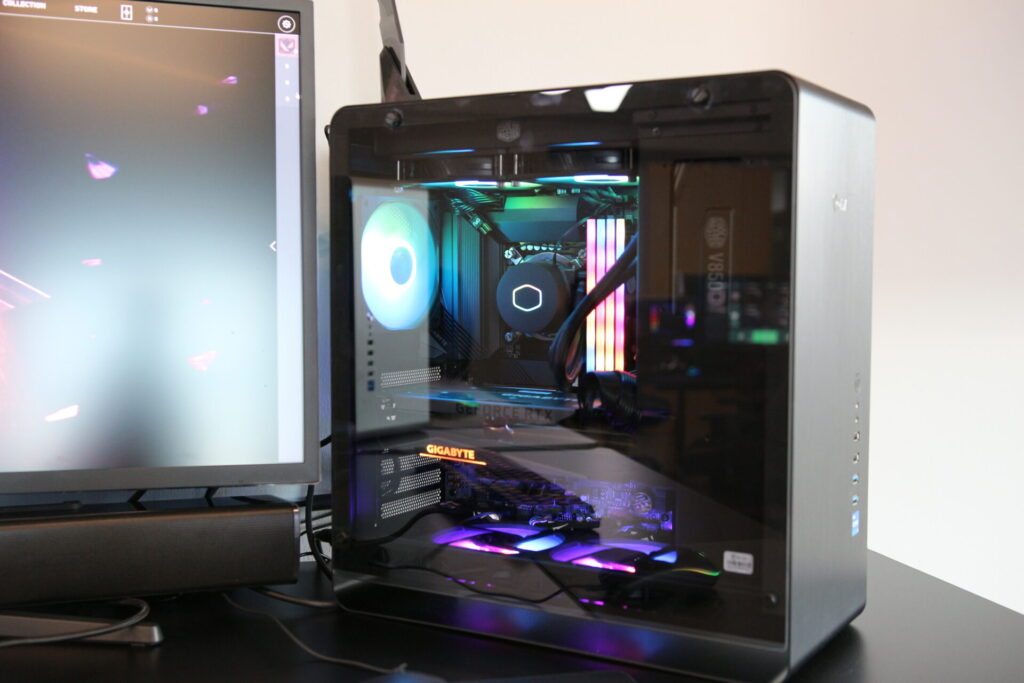One essential component of any gaming PC setup is the gaming mouse. In the world of competitive gaming, having the right gaming mouse can make all the difference. It serves as an extension of the player’s hand, translating their movements into on-screen actions. With so many options available, it’s crucial to understand the various factors that contribute to a gaming mouse’s performance. In this article, we will focus on two key factors: DPI (Dots Per Inch) and polling rate. We will also explore additional features that can enhance your overall gaming experience.
1. Understanding DPI (Dots Per Inch)
a) Definition of DPI
DPI, or Dots Per Inch, is a crucial aspect of a gaming mouse. Essentially, DPI measures a mouse’s sensitivity. The higher the DPI, the farther your cursor moves on the screen. Conversely, a lower DPI results in less cursor movement. Finding the right DPI is vital for an optimal gaming experience.
b) How DPI affects cursor sensitivity and precision
DPI plays a significant role in determining cursor sensitivity and precision in gaming. In essence, a higher DPI translates to increased sensitivity. Consequently, the cursor covers more screen area with less physical mouse movement. This characteristic is particularly useful for players who prefer rapid movements.
On the other hand, a lower DPI means enhanced precision. This setting requires more significant physical movement to cover the same screen area. As a result, gamers who need precise control, like snipers in first-person shooters, often prefer a lower DPI. Therefore, understanding how DPI affects gameplay is crucial for selecting the right mouse.
c) The relationship between DPI and screen resolution
In today’s gaming world, screen resolutions have drastically improved. Consequently, higher resolutions require higher DPI settings. As a result, a high-resolution display benefits from a higher DPI mouse. This setting allows the cursor to cover more pixels without sacrificing speed or precision.
However, this doesn’t mean that a high DPI is necessary for all gamers. Instead, the ideal DPI depends on individual preferences and the games played. Ultimately, the perfect balance between DPI and screen resolution can enhance the overall gaming experience on a gaming PC.
d) Pros and cons of high and low DPI settings
A high DPI setting provides faster cursor movement. For instance, in fast-paced games like first-person shooters, a high DPI allows quick target acquisition. Moreover, it reduces the need for large mouse movements, which can be beneficial for gaming on a limited desk space. However, it can also lead to overshooting targets, making precision more challenging.
Alternatively, a low DPI setting offers greater precision. It is especially useful in games that require fine control, such as strategy games and certain shooter roles. Nonetheless, low DPI can result in slower cursor movement. This drawback may hinder rapid reactions in specific gaming scenarios.
In conclusion, understanding the pros and cons of different DPI settings is vital for selecting the perfect mouse for your gaming PC. Experimenting with various DPI options can help you find the ideal balance for your needs and preferences.
2. Exploring the Polling Rate
a) Definition of polling rate
The polling rate is another critical factor in gaming mouse performance. In simple terms, it refers to how often a mouse reports its position. Measured in hertz (Hz), a higher polling rate means more frequent updates. For gamers, a higher polling rate can lead to smoother and more responsive cursor movements.
b) How polling rate impacts gaming performance
The impact of polling rate on gaming performance is significant. A higher polling rate results in reduced input lag. In other words, it decreases the time between moving the mouse and seeing the corresponding cursor movement on screen. For competitive gaming, a high polling rate is crucial for ensuring that every input is registered quickly and accurately.
Conversely, a lower polling rate may lead to increased input lag. This lag can make the mouse feel less responsive, which can be detrimental in fast-paced games. However, it is worth noting that a lower polling rate consumes less system resources. For gaming PCs with limited processing power, this trade-off may be necessary.
c) Differences between high and low polling rates
High polling rates, such as 1000 Hz, provide more frequent updates to your gaming PC. As a result, they deliver smoother and more responsive cursor movements. This responsiveness is essential for competitive gamers who rely on quick reflexes and precise actions. However, higher polling rates can also consume more CPU resources, potentially affecting system performance.
On the other hand, low polling rates, like 125 Hz, offer fewer updates. Consequently, they can lead to increased input lag and less responsive cursor movements. In some cases, this lag may not be noticeable to casual gamers. Additionally, lower polling rates use fewer system resources, making them a viable option for gaming PCs with limited processing power.
d) The optimal polling rate for various gaming genres
The optimal polling rate depends on the type of games you play. For fast-paced genres, such as first-person shooters and fighting games, a high polling rate is highly recommended. This rate ensures that every input is registered quickly and accurately, giving players a competitive edge.
Alternatively, slower-paced games, such as turn-based strategy games or casual titles, may not require high polling rates. In these instances, a lower polling rate may be sufficient and help conserve system resources. Ultimately, the best polling rate depends on your personal preferences and the games you play.
3. Balancing DPI and Polling Rate for Your Gaming Needs
a) Factors to consider when choosing a gaming mouse
Selecting the right gaming mouse for your gaming PC involves considering several factors. Personal preferences and play style are essential aspects to think about. Some gamers prefer high DPI settings for quick movements, while others opt for low DPI for precision. The type of games you play also influences your choice, as certain genres may benefit from specific DPI and polling rate settings.
Screen resolution is another crucial factor. Higher resolutions may require higher DPI settings to cover more screen area without sacrificing speed or precision. Ultimately, balancing DPI and polling rate to match your preferences and gaming PC setup can result in a more enjoyable gaming experience.
b) Tips for adjusting DPI and polling rate settings
Experimentation is key when adjusting DPI and polling rate settings. Many gaming mice come with adjustable DPI settings, allowing you to find the perfect balance. Start by trying out different DPI levels and polling rates in your favorite games. Pay attention to your in-game performance and comfort level while using your gaming PC.
Gradually refine your settings based on your observations. It’s important to remember that the ideal DPI and polling rate may differ between games. For instance, you might prefer a higher DPI and polling rate for a fast-paced shooter but opt for lower settings for a strategy game. Don’t be afraid to adjust your settings as needed to match your gaming PC experience.
c) Examples of popular gaming mice and their DPI and polling rate options
Several popular gaming mice cater to various DPI and polling rate preferences. For example, the Logitech G Pro X Superlight offers a DPI range of 100-25,600 and a polling rate of 1000 Hz. This mouse is suitable for gamers who require high DPI and polling rate settings for their gaming PC.
Alternatively, the Razer DeathAdder V2 features a DPI range of 100-20,000 and a customizable polling rate up to 1000 Hz. This mouse is versatile and caters to a wide range of gaming preferences. In summary, there is a gaming mouse available to suit every gaming PC setup and play style.
4. Additional Features to Look for in a Gaming Mouse
a) Ergonomics and design
Comfort and ergonomics are vital when choosing a gaming mouse. After all, you may spend hours using the mouse during intense gaming sessions. Ergonomic designs reduce strain on your wrist and hand, helping you maintain peak performance. Additionally, consider the grip style you prefer – palm, claw, or fingertip – as different mice cater to varying grip preferences.
Moreover, the size and weight of a gaming mouse also play a role in overall comfort. Some gamers prefer lightweight mice for quick movements, while others opt for heavier options for increased stability. Ultimately, finding a gaming mouse that fits your hand comfortably and supports your grip style is essential for an enjoyable gaming experience.
b) Customizable buttons and macros
Customizable buttons and macros can enhance your gaming experience on a gaming PC. Additional buttons allow for easy access to frequently used commands, such as reloading or switching weapons. Many gaming mice provide software that enables you to program these buttons and create custom macros, streamlining your in-game actions.
When choosing a gaming mouse, consider the number of buttons you require and their placement. Keep in mind your preferred grip style and hand size, as these factors influence button accessibility. By selecting a gaming mouse with customizable buttons and macros, you can tailor your gaming experience to your specific needs.
c) Wired vs. wireless options
Both wired and wireless gaming mice have their pros and cons. Wired mice often provide a more stable connection to your gaming PC, eliminating input lag concerns. They also don’t require battery replacements or charging, ensuring uninterrupted gaming sessions. However, the cable can sometimes get in the way or limit mouse movement. Additionally, if you prefer a neat and organized setup, a wired mouse may not be your preference.
Wireless gaming mice offer freedom of movement and a clutter-free gaming space. In recent years, wireless technology has advanced, reducing input lag and improving battery life. Nevertheless, they may still be prone to occasional interference or connectivity issues. When choosing a gaming mouse, consider your setup and whether wired or wireless options best suit your needs.
d) RGB lighting and aesthetics
While aesthetics may not directly impact performance, they can enhance your desktop setup’s visual appeal. Many gaming mice feature customizable RGB lighting, allowing you to match your mouse’s color scheme with your other peripherals. By selecting a gaming mouse with RGB lighting and a design you find visually pleasing, you can create a cohesive and personalized gaming environment.
5. Our Favorite Gaming Mouse
Logitech G502 X

The Logitech G502 X is a gaming mouse for those seeking an edge. It has 11 programmable buttons and customizable RGB lighting. Users can customize the mouse to fit their gaming style. The G502 X has twin DPI settings, with on-the-fly adjustment up to 16000 DPI. It also has five onboard memory profiles for continued customization across games.
The G502 X has an ergonomic design, with comfortable texture grips on either side. Its adjustable weight tuning system and pivoting feet provide added control over the weight and balance. The braided cable reduces drag and ensures durability even during rigorous gaming sessions. In short, the Logitech G502 X is a versatile, high-performance mouse worth considering for gamers seeking customization options.
-
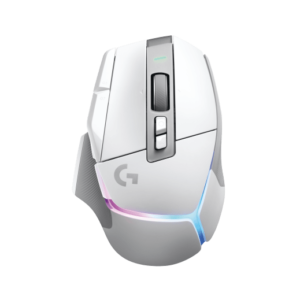 LOGITECH G502 X PLUS LIGHTSPEED RGB MSE WHITE (2Y)$255.00 w/GST
LOGITECH G502 X PLUS LIGHTSPEED RGB MSE WHITE (2Y)$255.00 w/GST -
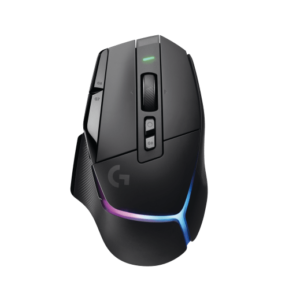 LOGITECH G502 X PLUS LIGHTSPEED RGB MSE BLACK (2Y)$255.00 w/GST
LOGITECH G502 X PLUS LIGHTSPEED RGB MSE BLACK (2Y)$255.00 w/GST
Logitech G Pro X Superlight
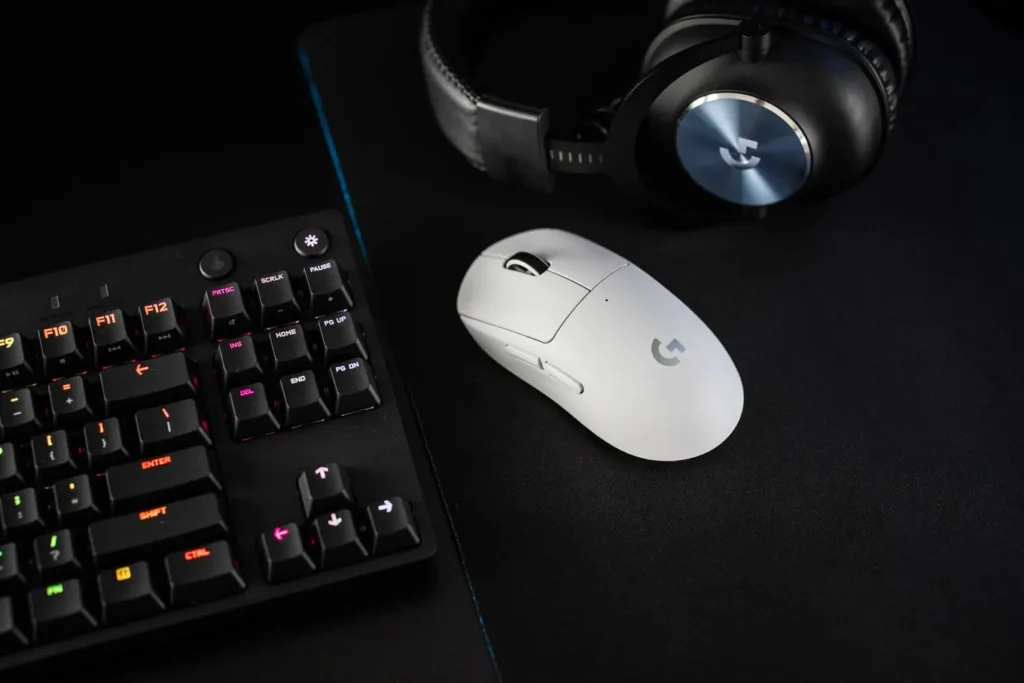
Gamers seeking a lightweight mouse will love the Logitech G Pro X Superlight. It weighs just under 69 g thanks to its hollowed-out design. It’s one of the lightest wireless gaming mice available. The HERO 25K sensor allows for up to 25,600DPI and precise tracking. An extra PTFE panel smooths mousing. A dongle storage slot is built into the underside of the mouse for safe travel. The Logitech G Pro X Superlight is the perfect choice for pro gamers.
-
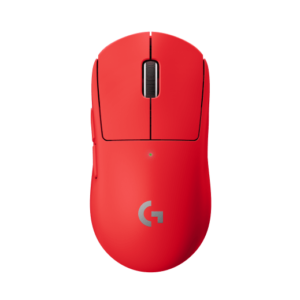 LOGITECH G PRO X SUPERLIGHT GAMING MSE RED (2Y)$239.00 w/GST
LOGITECH G PRO X SUPERLIGHT GAMING MSE RED (2Y)$239.00 w/GST -
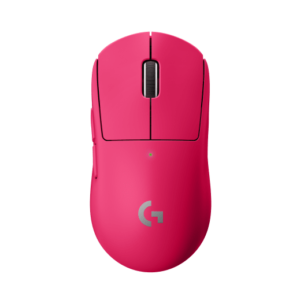 LOGITECH G PRO X SUPERLIGHT GAMING MSE MAGENTA 2Y$239.00 w/GST
LOGITECH G PRO X SUPERLIGHT GAMING MSE MAGENTA 2Y$239.00 w/GST -
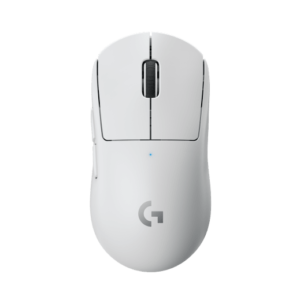 LOGITECH G PRO X SUPERLIGHT GAMING MOUSE WHITE(2Y)$239.00 w/GST
LOGITECH G PRO X SUPERLIGHT GAMING MOUSE WHITE(2Y)$239.00 w/GST -
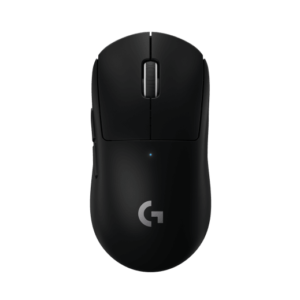 LOGITECH G PRO X SUPERLIGHT GAMING MOUSE BLACK(2Y)$239.00 w/GST
LOGITECH G PRO X SUPERLIGHT GAMING MOUSE BLACK(2Y)$239.00 w/GST
The Razer Basilisk X HyperSpeed
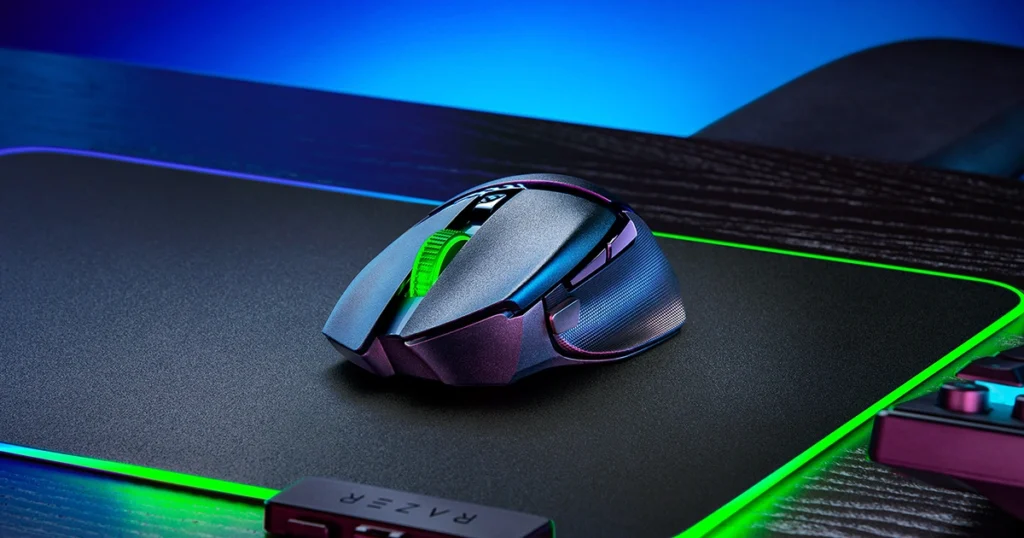
The Razer Basilisk X HyperSpeed is affordable, responsive, and accurate. It’s an FPS mouse with low-latency Bluetooth connectivity and 25-hour battery life. Its 11 programmable buttons provide ultimate control and customizability. Switch between its two adjustable DPI settings for more precision. Its comfortable, durable, and lightweight design reduces wrist stress. Plus, it has beautiful RGB lighting along its edges for style. The Razer Basilisk X HyperSpeed is a great choice for budget-conscious gamers who demand quality.
Conclusion
To sum up, selecting the perfect gaming mouse is a personal and essential decision. The right balance between DPI and polling rate can significantly impact your gaming performance and enjoyment. By understanding these key factors and considering additional features such as ergonomics, customizable buttons, and connectivity options, you can find a gaming mouse that truly complements your play style and preferences. Don’t be afraid to experiment with different settings and mice until you discover the ideal combination that elevates your gaming experience to new heights.
If you’re a gamer in Singapore searching for a one-stop-shop solution for all your gaming needs, look no further than VOLTA PC. They offer a wide range of gaming mice, gaming PCs, and other peripherals, ensuring you’ll find the perfect combination for your unique play style. Additionally, VOLTA PC provides the option to customize your gaming PC, tailoring it to your specific requirements for optimal performance.
